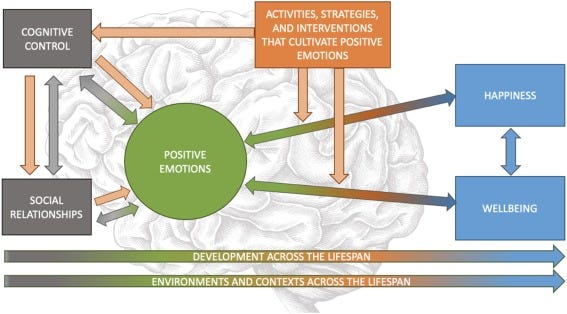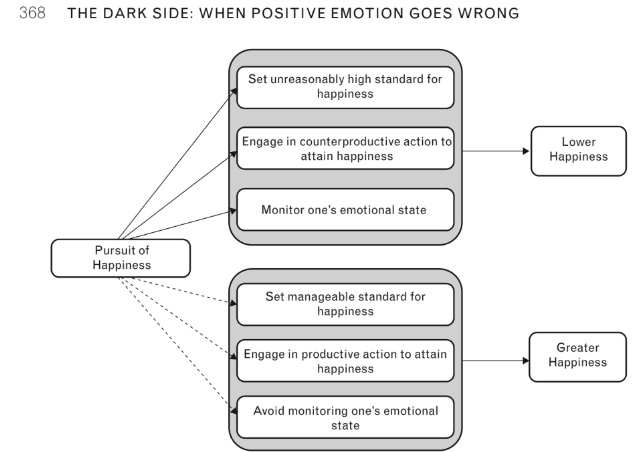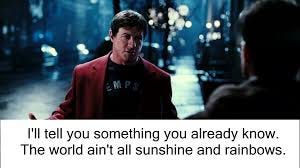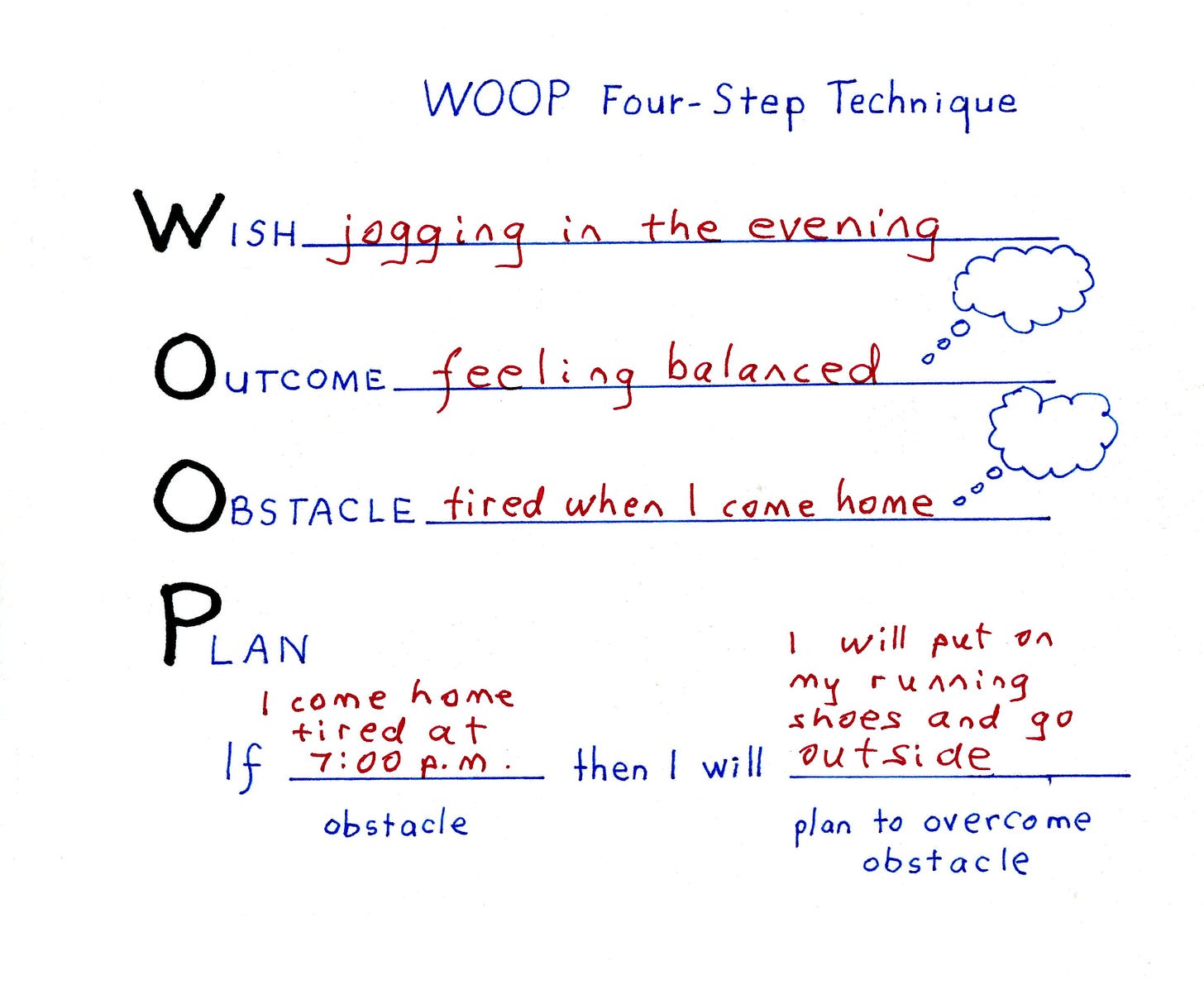Jordan Peterson explained in a video the powerful impact goals can have on your brain and emotions. In the video he compared anxiety to aimlessness. If you’re stuck in a desert you’re not necessarily overwhelmed by choosing which direction you should move. What’s overwhelming is that there are so many different options to choose from, this in turn causes anxiety.
The brain is set up to produce positive emotion. If you have a goal and move toward it, dopamine is produced and you are rewarded. It then in turn strengthens the neural circuits that moved you toward that goal which reinforces your decisions and keeps you on the path of trying to attain your goal.
This means if you have no goals, you won’t have positive emotion. (No bueno)
Many of you probably read the above and assumed you should begin by creating positive emotions, but the research tends to disagree. Think of positive emotion as the outcome (what you receive), instead of the motivation (what’s required to begin). More likely than not, the behaviors you need to adopt to hit your goals won’t be enjoyable.
“…several lines of research suggest a surprising paradoxical effect: the more people pursue positive emotion, the less likely they are to experience positive outcomes, including well-being, psychological health, and feelings of happiness.”
The Paradoxical Effects of Pursuing Positive Emotion
Even imagining yourself in a positive state currently could be holding you back. We’ve all experienced first hand how powerful negative emotions can be. However, they’re typically used to our detriment rather than for our gain. I believe dreaming about your goals and being positive are important, but dreaming and positivity need to be applied in the correct manner to be effective.
“Making decisions based on what will increase happiness is an ill-fated venture, because people are notoriously poor at knowing what will make them happy”
The Paradoxical Effects of Pursuing Positive Emotion
Fantasies and Positive Thinking
Dreaming about your goals
Instead of focusing on fantasies and dopamine producing daydreams, focus on practical componenets of attaining your goal and the belief in yourself to achieve the goal.
Being Positive
Instead of focusing on positivity, “self love”, “I’m fine just the way I am” focus on what you can improve on, be positive about the odds of your future improvement, how it will benefit you, and the people in your life you care about. If you’re setting a goal, you’re in some way admitting you’re inadequate. That may sound rough, but nobody is perfect. If you were perfect, why would you even bother setting a goal? Don’t be positive to the point where it prevents you from changing your behaviors.
Optimism can be defined as beliefs or expectations of the future that are based on experiences of past success. However, if you’re basing your optimism on something without past success, you’re likely engaging in wishful fantasies instead of optimism. Here’s the bad news: individuals who engage in fantasy are less likely to achieve their goals.
"…women who had strong positive fantasies about slimming down... lost twenty-four pounds less than those who pictured themselves more negatively. Dreaming about achieving a goal apparently didn’t help that goal come to fruition. It impeded it from happening. The starry-eyed dreamers in the study were less energized to behave in ways that helped them lose weight."
Gamechanger: Rethinking Positive Thinking By Gabriele Oettingen
Positive fantasy isn’t all bad, but it primarily acts as a coping mechanism for trauma, stress, depression, or other negative experiences. Positive fantasy is not an effective strategy to overcome guaranteed challenges and obstacles that will present themselves when trying to attain a goal.
There is also research indicating that when we engage in positive fantasy our minds begin to believe we’ve already achieved the goal and therefore we no longer need to struggle attempting to accomplish it. In summary, the pleasant, warm, fluffy feelings associated with daydreaming likely aren’t helping you reach your goals.
How To Set Goals
Engage in positive thinking instead of fantasies. Imagine yourself overcoming obstacles. By imaging yourself hurdling over obstacles you become more likely to take action when they occur (and they will occur) than somebody who only focuses on the positive fantasy of their goal. Gabriele Oettingen actually found that the more people are aware of obstacles they’ll need to overcome, the more likely they will be to succeed.
Mental Contrasting
Visualize the Positive Outcome
2. Imagine the Challenges in Achieving The Outcome
Imagine Yourself Overcoming These Challenges
WOOP Framework (Wish, Outcome, Obstacle, Plan)
Other Tips (The Science of Accomplishing Your Goals)
Turn your goals into habits
Set small goals to get more encouragement / reward
Change your environment
As you can see, simply being positive and engaging in fantasy is not enough. You must plan for obstacles, imagine yourself overcoming them, and have the route already mapped on exactly what you’ll do when problems present themselves.
Rethinking Positive Thinking Book
If you liked this article let me know in the comments or reply back via email. I hope you all pursue your goals with the content of this article in mind.
References
Ford, B., & Mauss, I. (2014). The paradoxical effects of pursuing positive emotion. Positive emotion: Integrating the light sides and dark sides, 363, 382.
https://makeachamp.com/de/blog/gamechanger-rethinking-positive-thinking-by-gabriele-oettingen
https://www.psychologytoday.com/us/blog/the-truisms-wellness/201610/the-science-accomplishing-your-goals







